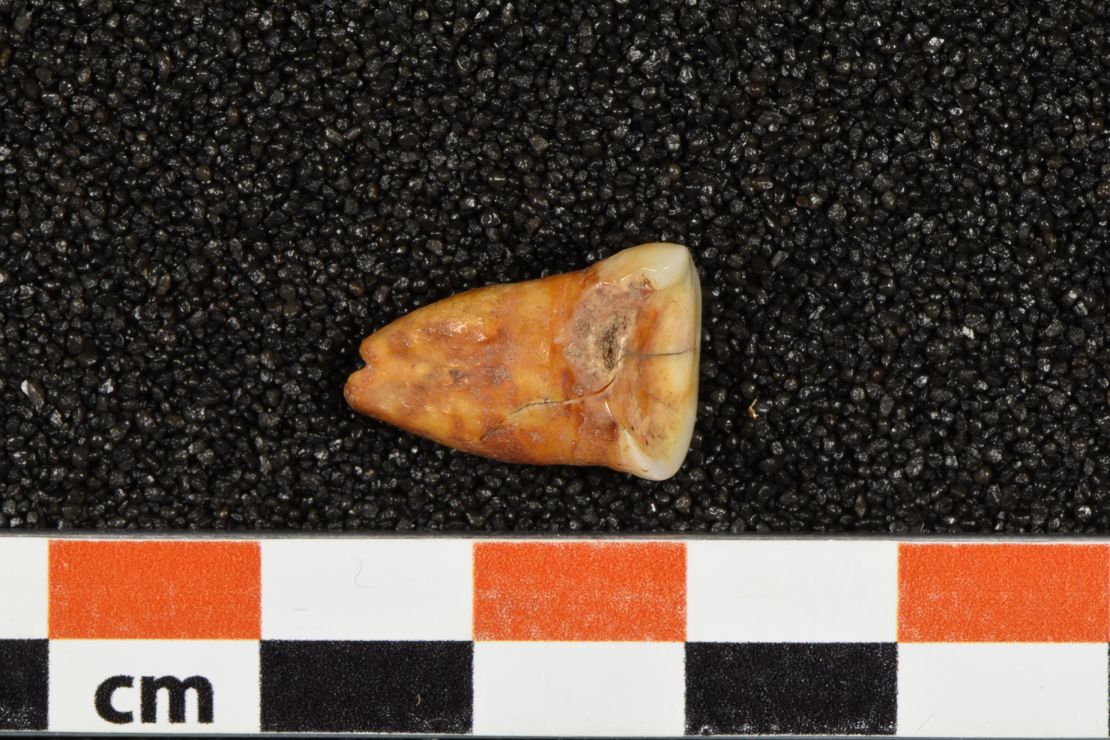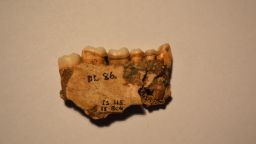Sign up for CNN’s Wonder Theory science newsletter. Explore the universe with news on fascinating discoveries, scientific advancements and more.
What did people in the Stone Age eat before the advent of farming around 10,000 years ago? A long-held stereotype — one that’s influenced modern fad diets — is that ancient humans hunted large animals and chowed down on mammoth steak.
But new research on a Paleolithic group called the Iberomaurusians, hunter-gatherers who buried their dead in Taforalt cave in what’s now Morocco between 13,000 and 15,000 years ago, is adding to a growing body of evidence that challenges the notion human ancestors predominantly relied on meat, according to a study published Monday in the journal Nature Ecology & Evolution.
Scientists analyzed chemical signatures preserved in bones and teeth belonging to at least seven different Iberomaurusians and found that plants, not meat, were their primary source of dietary protein.

“Our analysis showed that these hunter-gatherer groups, they included an important amount of plant matter, wild plants to their diet, which changed our understanding of the diet of pre-agricultural populations,” said lead study author Zineb Moubtahij, a doctoral student at Géosciences Environnement Toulouse, a research institute in France, and the Max Planck Institute for Evolutionary Anthropology in Leipzig, Germany.
The share of plant resources as a source of dietary protein in the humans whose remains were studied was similar to that seen in early farmers from the Levant, the present-day Eastern Mediterranean countries where plant domestication and farming were first documented.
Researchers also spotted a higher number of tooth cavities among the Taforalt specimens than is typically seen with hunter-gatherer remains of that period. The evidence suggested that the Iberomaurusians consumed “fermentable starchy plants” such as wild cereals or acorns, according to the study. The findings raise some intriguing questions about how agriculture spread across different regions and populations.
“While not all individuals primarily obtained their proteins from plants at Taforalt, it is unusual to document such a high proportion of plants in the diet of a pre-agricultural population,” said coauthor Klervia Jaouen, a researcher at Géosciences Environnement Toulouse, in an email.
“This is likely the first time such a significant plant-based component in a Paleolithic diet has been documented using isotope techniques,” Jaouen added.
Deciphering ancient diets
The researchers used a technique called stable isotope analysis to learn about the diet of each of the Iberomaurusians studied.
Nitrogen and zinc isotopes (variants of an element) contained in collagen and teeth enamel can reveal the amount of meat ancient diets once contained, while carbon isotopes can shed light on whether the main source of protein was meat or fish.
“Humans consume these foods and the isotope information is recorded in tissues like bones and teeth,” Moubtahij said. “By analyzing this tissues that we find in archaeological records, we can know if a person ate more meat or they ate more plant-based food.”
The isotope technique shows the amount of plants eaten but not the type. However, botanical remains of charred sweet acorns, pistachio, pine nuts, wild oats and pulses discovered at the site support the information gleaned from the human remains. Grinding stones unearthed at the site also suggest plant processing took place nearby.
However, the Iberomaurusians weren’t strict vegetarians, the study noted. Cut marks on the remains of Barbary sheep and gazelles, as well as ancient horselike and cowlike mammals, suggested that some animals had been butchered and processed for food.
The increased reliance on plant food was probably driven by several factors — including a wider range of edible plants and perhaps a depletion of large game species, according to the study.
Early weaning clues
The isotope analysis also detected evidence of one case of early weaning, with starchy plant foods introduced into an infant’s diet before its death at between 6 and 12 months old.
“This contrasts with hunter-gatherer societies where extended breast-feeding periods are the norm due to the limited availability of weaning foods,” according to the study.
The research only investigated the diets among one group of Stone Age hunter-gatherers. However, a similar study published in January — which analyzed the remains of 24 early humans from two burial sites in Peru dating from 9,000 to 6,500 years ago — revealed that ancient diets in the Andes were composed of 80% percent plant matter and 20% meat.
A November 2022 study revealed that Neanderthals and early Homo sapiens were sophisticated cooks, combining plant-based ingredients such as wild nuts, peas, vetch, lentils and wild mustard.
“I don’t think that there is a standard diet for everyone (in this period), but it depends on the environment. Humans are resilient and flexible in their diet habits,” Moubtahij said.
The work undermines the idea that a Stone Age diet was meat heavy — a rigid assumption perpetuated by present-day dietary trends like the Paleo diet. But the stereotype likely has its roots in past research, and there are a few possible reasons why.
Evidence for meat-eating, in the form of butchered animal bones, is often more “archaeologically visible” than the evidence for plant eating, said Briana Pobiner, a research scientist and museum educator at the Human Origins Program in the department of anthropology at the Smithsonian National Museum of Natural History. She wasn’t involved in the study.
Another reason for the idea that meat was central to early human diets is “the perception that hunting was a key behavioral innovation that occurred early in our evolutionary history — rooted in part in early hunter-gatherer studies carried out by male scholars that primarily focused on big game hunting by men and did not document, discounted, or downplayed the important dietary role of women gathering smaller game and plant resources,” she said via email.
Agricultural transition revelations
Jaouen said that in the Levant region, archaeologists had documented a similar plant-based diet among another group that practiced a hunting-and-gathering lifestyle just before the development of agriculture, raising questions as to why the transition to farming did not simultaneously occur among the Iberomaurusian population.
“These findings indicate that several populations at the end of the Paleolithic adopted a diet similar in terms of plant content to that of farmers,” she said.
The transition to agriculture was a complex process that occurred at different times and proceeded at different rates, in different ways with different foods, in different places, Pobiner said.
“In other words, it was largely a local phenomenon that could involve transitional forms of subsistence — not a single, sharp, simultaneous worldwide shift,” she added.









